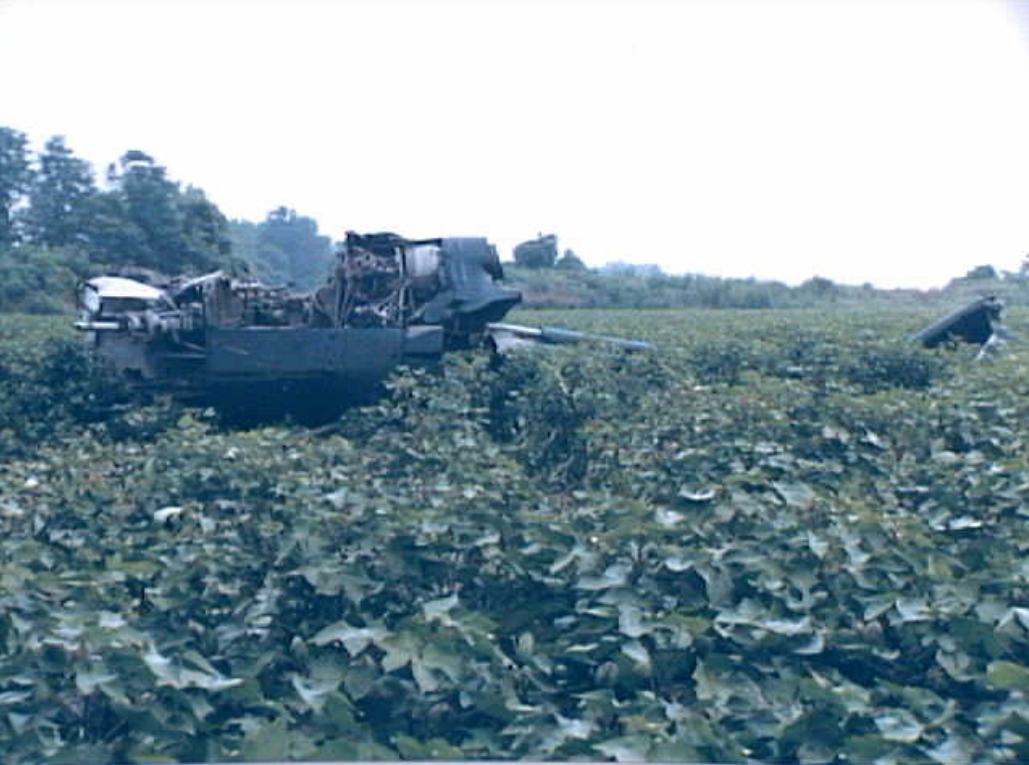
ASN Wikibase Occurrence # 31050
This information is added by users of ASN. Neither ASN nor the Flight Safety Foundation are responsible for the completeness or correctness of this information.
If you feel this information is incomplete or incorrect, you can submit corrected information.
| Date: | Wednesday 27 August 1997 |
| Time: | 10:10 |
| Type: |  Bell UH-1B |
| Owner/operator: | Buffalo Island Flying Service |
| Registration: | N482SA |
| MSN: | 756 |
| Year of manufacture: | 1963 |
| Total airframe hrs: | 5152 hours |
| Engine model: | Lycoming T53-L-11D |
| Fatalities: | Fatalities: 1 / Occupants: 1 |
| Aircraft damage: | Destroyed |
| Category: | Accident |
| Location: | Manila, AR -
 United States of America United States of America
|
| Phase: | Manoeuvring (airshow, firefighting, ag.ops.) |
| Nature: | Agricultural |
| Departure airport: | Manila, AR |
| Manila, AR | |
| Investigating agency: | NTSB |
| Confidence Rating: |
On August 27, 1997, approximately 1010 central daylight time, a SW Florida Aviation SW204 helicopter, N482SA, was destroyed following an in-flight separation of a main rotor blade while maneuvering, near Manila, Arkansas. The helicopter was registered to and operated by the pilot, DBA Buffalo Island Flying Service, as a Title 14 CFR Part 137 aerial application flight. Visual meteorological conditions prevailed, and a flight plan was not filed for the local flight. The commercial pilot, sole occupant of the helicopter, was fatally injured. The flight originated from the pilot's private airstrip near Manila, Arkansas, about 5 minutes prior to the accident.
The pilot was applying pesticide to a cotton field when the outboard 9 feet of one main rotor blade separated in flight, resulting in the main rotor system separating from the main transmission mast. The in-flight separation of the main rotor blade was due to fatigue cracks emanating from a puncture through the lower surface of the blade in the leading edge area. The shape of the puncture, the crater mark above the puncture, and surrounding areas containing heavy deposits of lead residue indicated a bullet had entered the blade. The puncture had been repaired; however, manufacturer's specifications stated that this type damage is nonrepairable and the blade should be scrapped. In July 1995, the rotor blade was modified. During the modification process, the blade was inspected for damage. In April 1997, an AD requiring inspection of the blade was complied with.
Probable Cause: Fatigue failure of the main rotor blade resulting in the in-flight separation of the main rotor system due to the use of an unairworthy blade, and failure of the maintenance personnel who modified the rotor blade and the mechanic who complied with the Airworthiness Directive to locate the unapproved repair. A factor was the unapproved repair of the main rotor blade.
Accident investigation:
 |
|
Sources:
NTSB
Images:



Photos: NTSB
Revision history:
| Date/time | Contributor | Updates |
|---|---|---|
| 27-Sep-2008 01:00 | ASN archive | Added |
| 31-Oct-2011 12:00 | Dr. John Smith | Updated [Time, Total fatalities, Total occupants, Other fatalities, Location, Country, Phase, Nature, Departure airport, Destination airport, Source, Damage, Narrative] |
| 01-Jul-2016 16:40 | Honcho 64 | Updated [Operator, Source, Narrative] |
| 18-Oct-2022 14:18 | Captain Adam | Updated [Time, Total fatalities, Location, Source, Narrative, Accident report, Photo] |
| 18-Oct-2022 14:19 | Captain Adam | Updated [Photo] |
| 18-Oct-2022 14:19 | Captain Adam | Updated [Photo] |
Corrections or additions? ... Edit this accident description
The Aviation Safety Network is an exclusive service provided by:


 ©2024 Flight Safety Foundation
©2024 Flight Safety Foundation